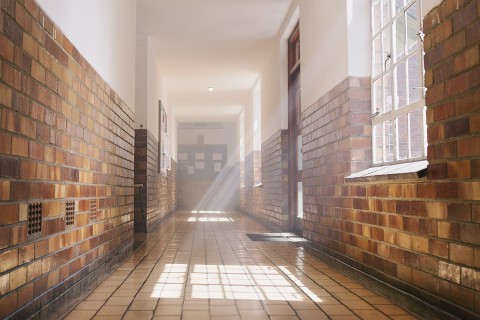Mercy for the earth, mercy for ourselves
Last week, Pope Francis proved true to his namesake and his own emerging legacy: he proposed adding care for the environment to the traditional list of works of mercy.
The Catholic Church has long advocated for spiritual and corporal works of mercy, most of which stem from Jesus’ exhortations in Matthew 25:34–40. While some Protestants are allergic to the word works, the works of mercy are part of the DNA of Catholic social thought. James Keenan, a Jesuit, defines mercy as “the willingness to enter into the chaos of others.” Dorothy Day and the Catholic Worker movement built on a foundation of the works of mercy, and many an artist has portrayed humanity hard at work showing mercy.
While I for one would be strongly in favor of an update to Caravaggio’s Seven Works of Mercy in which someone is installing an energy-saving light bulb, this latest work of mercy doesn't really need art to explain it. We’re all familiar with the practices Francis refers to—using less plastic, taking care not to waste food, keeping an eye on those thermostats, and (for God’s sake) turning the lights off when we leave the room. Adding the environment to a list of ills is the modernist’s civic duty. And no one following in the footsteps of St. Francis could fail to speak on behalf of the natural world and those who depend on it most.
It’s none too soon. In case you haven’t heard, 2015 was the hottest year on record. For the better part of the past 200 years, the natural world has been scourged and disregarded by our world economies. In modern capitalist parlance, natural resources are “externalized costs.” Unfettered consumption chews up forests, bedrock, and rivers and spits them back out. What's left are piles of ash, rubble, and pollution that never make it onto a balance sheet. It’s brilliant really: costs are separated from benefits.
The pope has brought desperately needed attention to this flawed accounting. He is an ardent voice for those who are the most vulnerable, who suffer first and most from environmental degradation and injustice.
The attention Francis brings is unlike most activism because it admonishes our purely extractive, utilitarian way of thinking about the planet. By adding the environment as an eighth mercy, Pope Francis says more than he would with an addendum to his Laudato si’. He calls us to internalize the planet's pain. This is subtle but important. The eighth work of mercy brings the natural world back into the fold of human concerns. Feed the hungry, clothe the naked, plant a tree. It may sound trite, but these activities have always been more connected than the modern eye can see.
It's a great irony: our modern way of living has kept the earth itself on the fringes. Until very recently, environmental concerns were often equated with the ravings of relatives who harp about Reagan taking solar panels off the White House roof. By adding this mercy, Francis doesn't just invite himself and your eco-minded extended family for dinner. He tells everyone else to shut up and listen.
What was once externalized has become re-internalized—not just into societal awareness, but into human moral thinking. And the basic truth is that the earth’s wellbeing has always been intertwined with humanity's. Of course, it will not always be clear how best to embody this new work of mercy. But Francis forces us to consider our environment as part of our familial relations. The pope is bringing the earth back to the fore of our vision, so that we can see all the ways in which the planet needs our mercy and God's.





